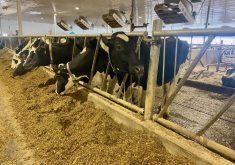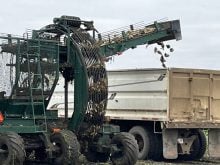MAIN CENTRE, Sask. – People once came to Main Centre by land, water and rail.
Today the southwestern Saskatchewan hamlet houses only the scattered remains of its heyday in a museum within the walls of a former school. Included in the area’s artifacts are the engine and lifebuoy of the Herbert ferry that used to bring people and goods across the Saskatchewan River.
The early pioneers used Main Centre for overnight stopovers because it was situated between Herbert, the Saskatchewan River and Beechy.
In dry years when the river was low, ferry travellers would sail halfway across to a sandbar and walk to an island to pick berries or have a picnic.
Read Also

Accurate accounting, inventory records are important
Maintaining detailed accounting and inventory records is not just a best practice; it’s a critical component of financial health, operational efficiency and compliance with programs like AgriStability.
The museum displays photos of youth and choir groups crossing to bring a musical program to their sister church at Beechy.
Ferry operator Jacob Harder had a vegetable market garden on the north side of the river.
In later years with the building of the dam at Outlook, the river became Lake Diefenbaker. Huge poplar trees were left to rot and wash up on the shores as driftwood forcing riverside ranchers like Ben Jahnke to relocate.
At its end, the ferry, which once moved cattle to the Matador pastures and farmers with horses and wagons of grain, was pushed out into the water, set ablaze and sunk.
The ferry and the railway were both important to the economic development of Main Centre, which included businesses like a grocery store, post office, blacksmith shop, harness shop, livery barn, garages and a hotel.
The Canadian Pacific Railway line arrived in 1930. The track was built a kilometre north of the original town site. Many of the buildings then moved closer to the line. A century-old Main Centre Mennonite Brethren Church, which caters to a congregation of 60, marks the spot where the original town site once sat.
Twelve-horse teams were used to elevate the earth into dump wagons, which were then hauled by more horses to the rail line grade site.
Rail crews built the line to include a Y-shape at the end of the track so the train could turn around.
The train was routinely used by locals to ship their eggs and cream to Moose Jaw every Monday. Some people used it to go to medical appointments in the city.
Stockyards built near the line in Main Centre were established as holding pens for cattle bound for slaughter at Moose Jaw. Baby chicks from Moose Jaw’s hatchery were among goods arriving by train, in addition to relief supplies during the Depression years.
A local woman would change the bed linens, cook meals and keep a fire lit for the train crew in the little shack they used for overnight stays.
In November 1930, the train derailed when it hit snow that had blown into an area of high banks alongside the railway track.
A crane and winch arrived to set the spilled locomotive and cars upright after scores of men shovelled away snow from the site. Train service to Main Centre was temporarily halted while track repairs were completed. By 1980, the same tracks were being dismantled.
Today, only a slight rise of land remains where the busy rail line at Main Centre once ran.














